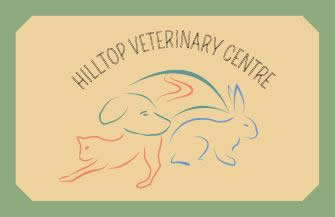After the dreary winter months, we look forward to the first flowers in the spring. Crocuses sprout out of the ground and tulips brighten up many living rooms. They may look pretty, but some spring flowers are toxic to cats and dogs. Especially if your four-legged friend enjoys chewing or digging in the garden….
Many of our classic British spring bulbs can have toxic effects on cats & dogs, causing signs of oral and gastric irritation – salivation ( drooling ),vomiting, diarrhoea & abdominal pain. Eating the bulbs especially, but also stems & leaves, & in some cases flowers of plants such as Lily of the Valley, Daffodils, Snowdrops, Crocuses, Hyacinths, Tulips, Irises & Gladioli can lead to these symptoms.
In addition, Lily of the Valley & Daffodils can cause abnormal heart rhythms ( cardiac arrhythmias ) resulting in shortness of breath, lethargy & collapse.
Neurological signs such as trembling, dilated pupils, paralysis & convulsions can also develop after ingestion of Daffodils & Snowdrops. As little as 15g of plant material can cause problems if eaten.[/vc_wp_text]
It is important to see your vet as soon as possible. It is a good idea to bring the suspected plant with you as this may help in assessing the risk. If seen within two hours after ingestion, the vet may advise making a dog vomit by administering a drug called Apomorphine. This prevents the plants from being digested and the level of toxic ingredients entering the circulation can be minimised. In severe cases, gastric lavage under general anesthesia may be necessary. Supplementing with activated charcoal can help reduce the absorption of toxins from the intestine. This absorbs the poisonous substances and is excreted undigested by the animal.
Symptomatic supportive treatment will be required for some patients with signs of toxicity. Fluid loss can be corrected with intravenous fluid therapy, helping to stabilise the blood pressure and circulation. In severe cases of poisoning with cardiac arrhythmia, the animals must be hospitalised and intensively monitored.
Like Christmas, Easter carries the risk of chocolate and raisin toxicity. Chocolate poisoning is dose dependent and the severity of symptoms ( vomiting, diarrhoea, restlessness, tremors, seizures and heart rhythm abnormalities ) is directly dependent upon the weight of the dog & the weight & type of chocolate eaten – the better the quality of chocolate & the darker it is, the more dangerous it becomes. This is because the toxin theobromine is contained within the cocoa solid content. If you suspect your dog has eaten chocolate it is wise to contact your vet with information about the type & quantity – they will quickly be able to calculate if the amount eaten is safe, or requires a visit for treatment ( again Apomorphine, activated charcoal, & symptomatic care if necessary ).
Raisins unfortunately are less predictable – in some dogs one raisin can be enough to precipitate kidney failure, in others they could eat a handful and be fine, but there is absolutely no way to predict the outcome, so all cases of raisin ingestion have to be treated as urgent potential toxicities.
- Ring your vet as soon as possible & take advice
- Be prepared to take your animal to the surgery immediately as the best outcomes are achieved in the patients who are made to vomit quickly, before significant amounts of toxin are absorbed.
- Be aware that your pet may require admission for fluid therapy if it is too late to make them vomit.





